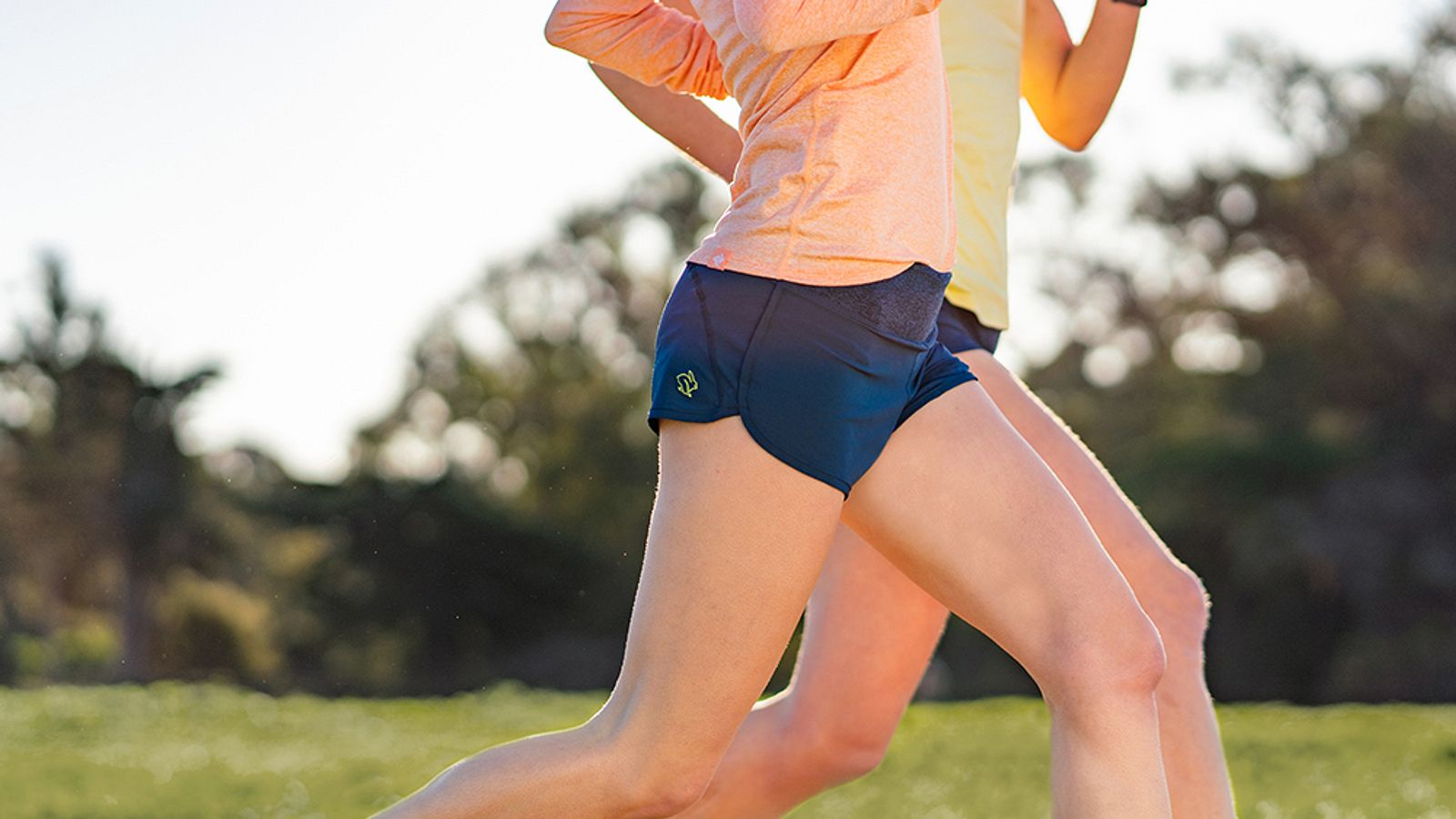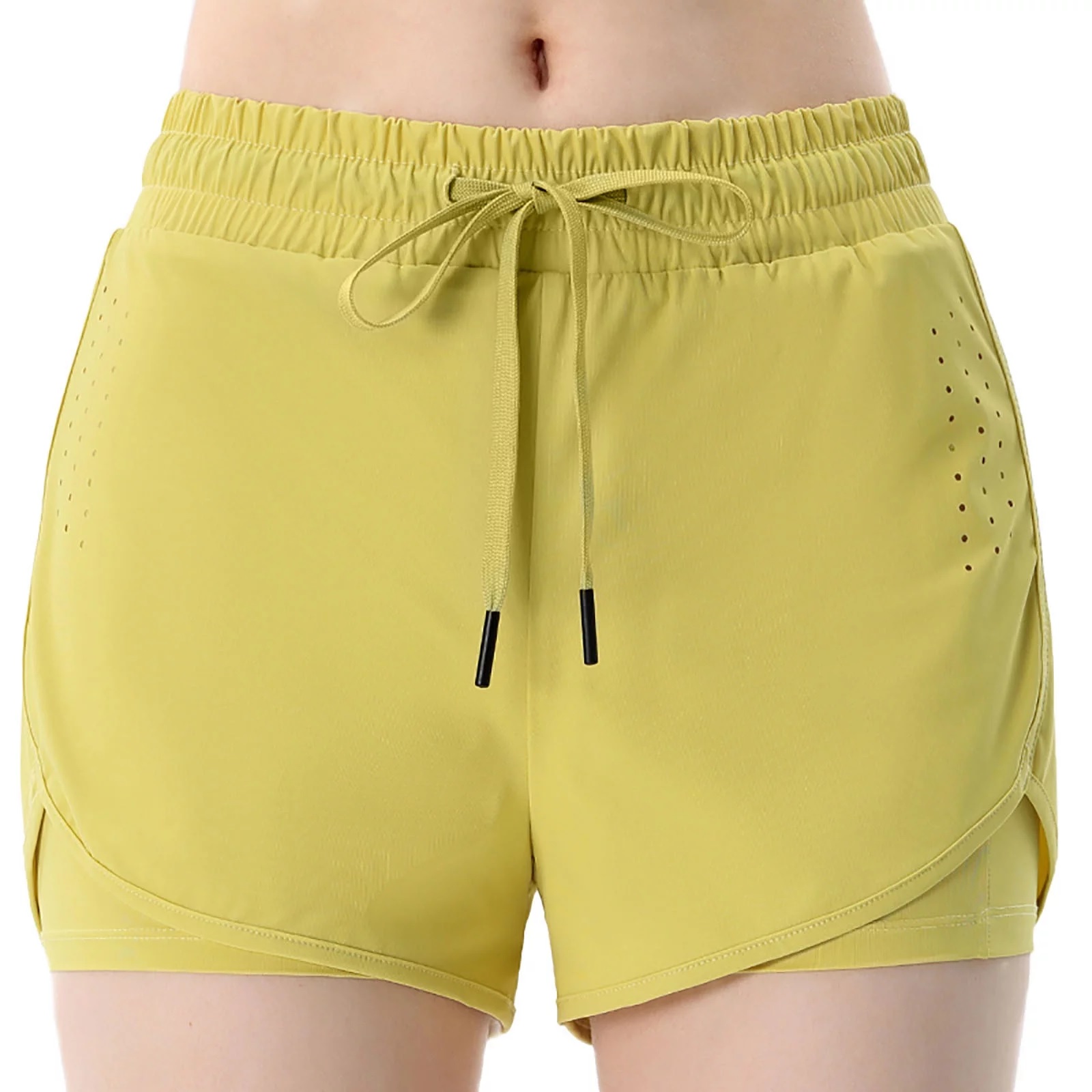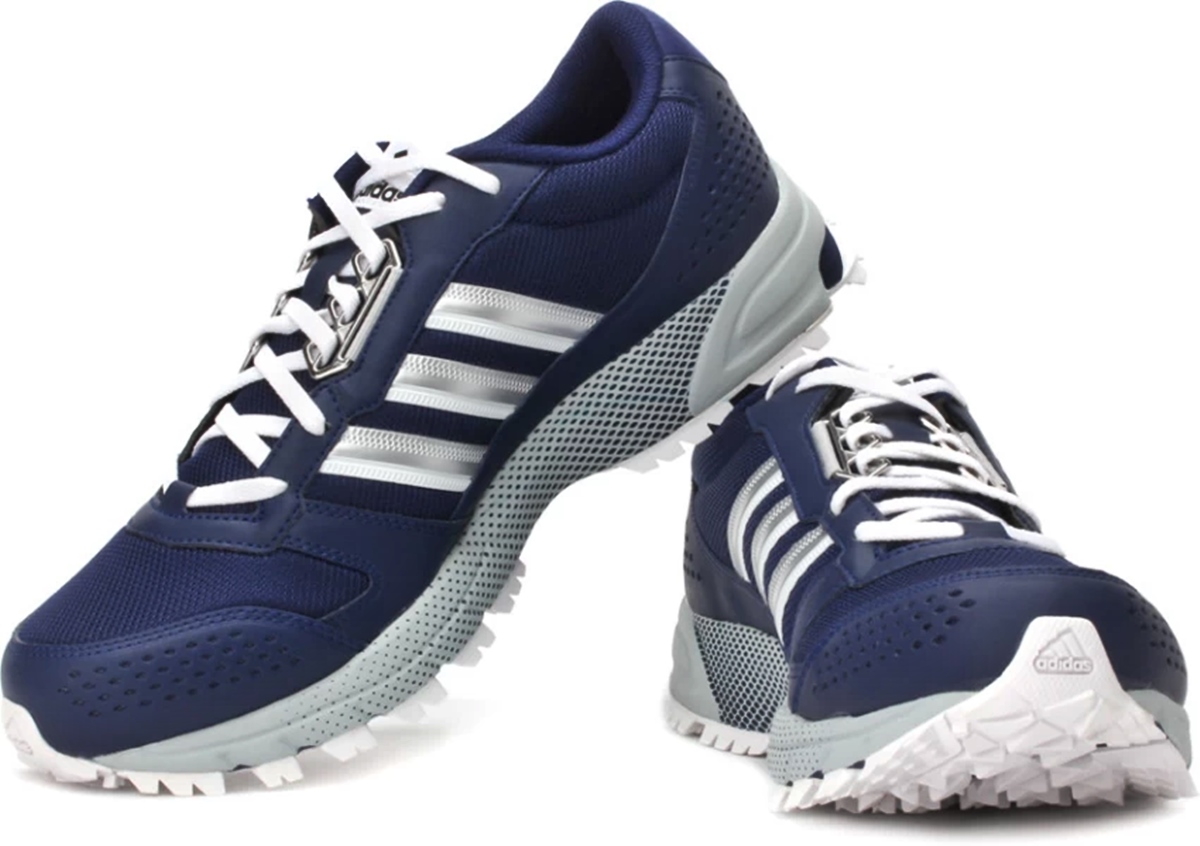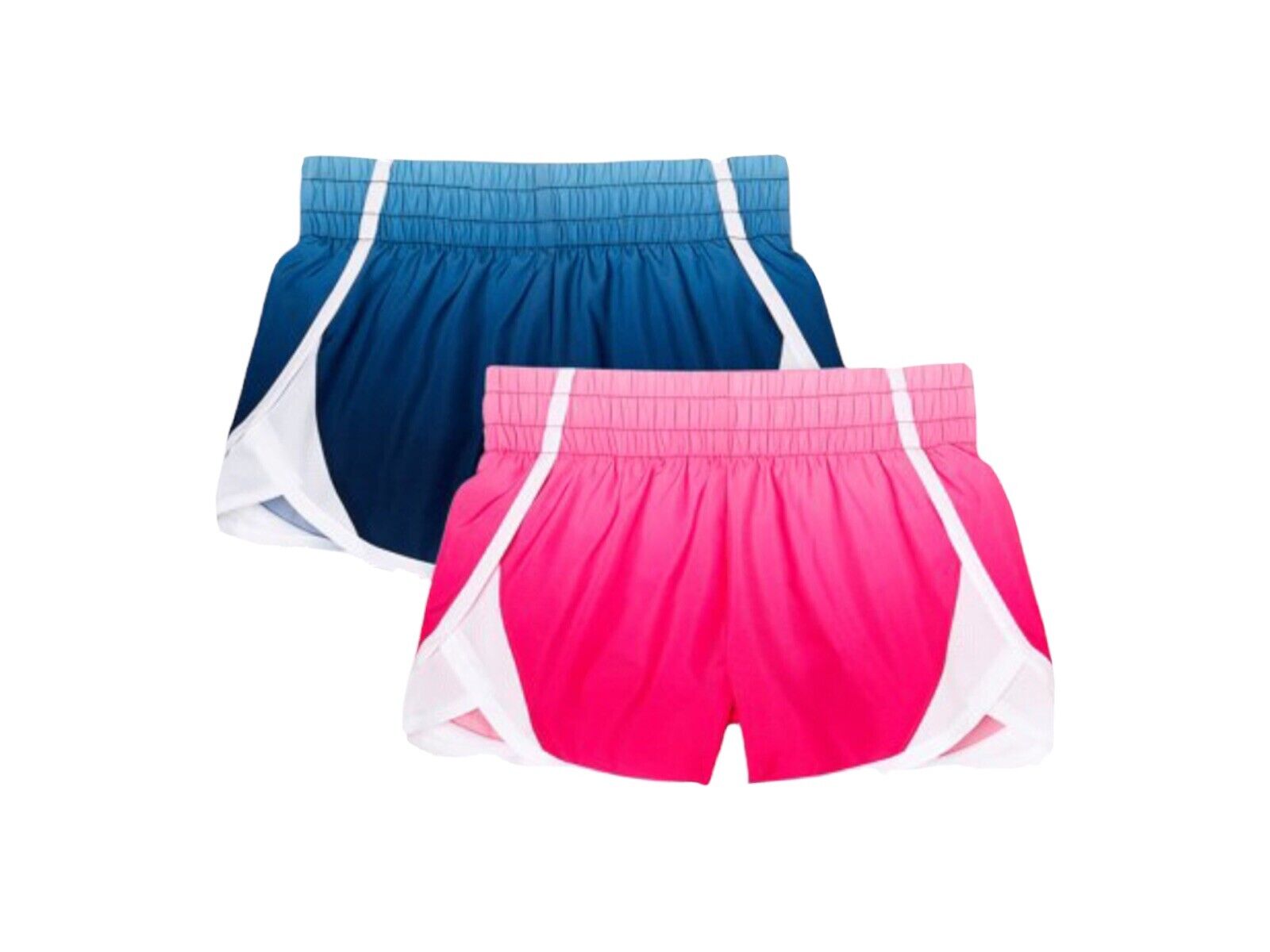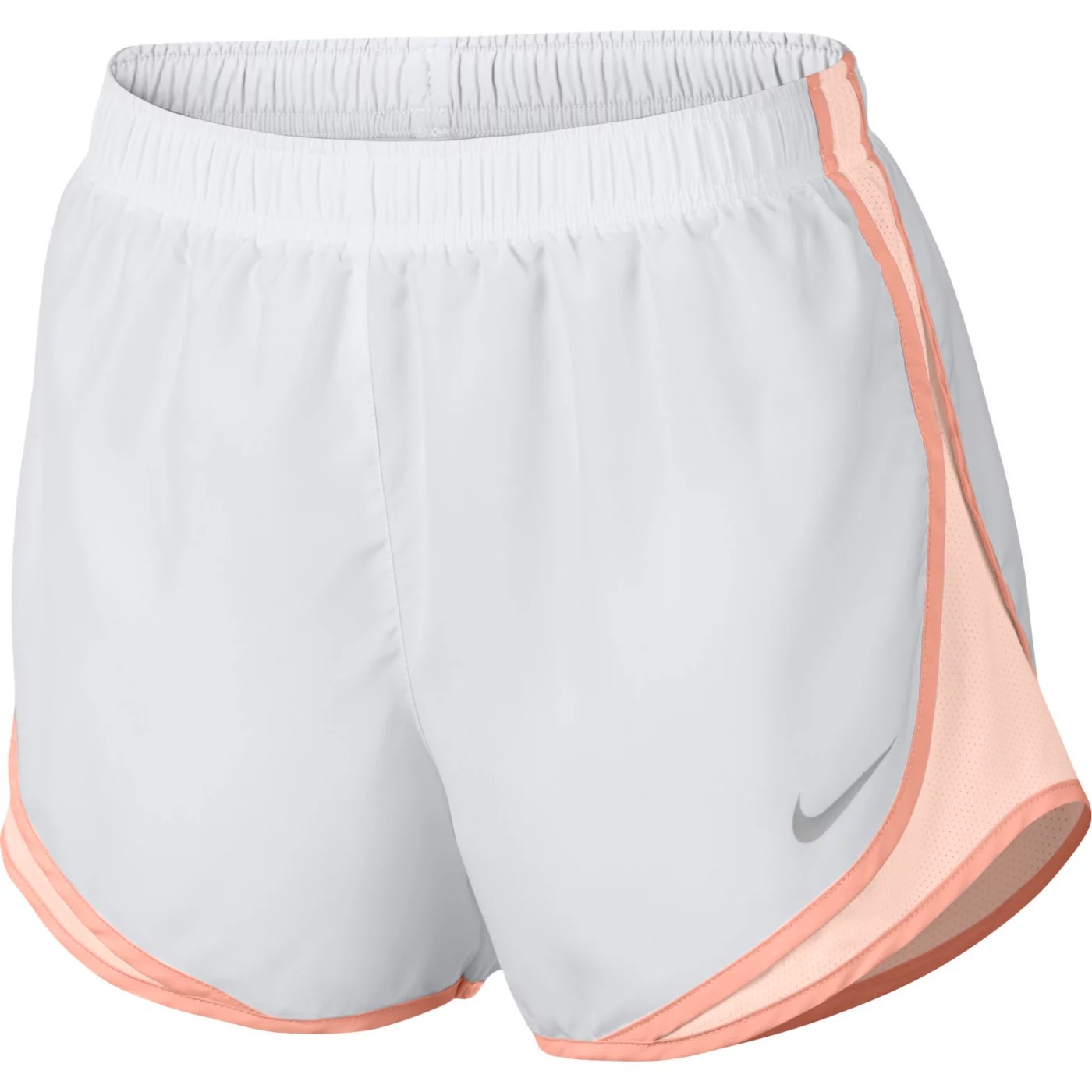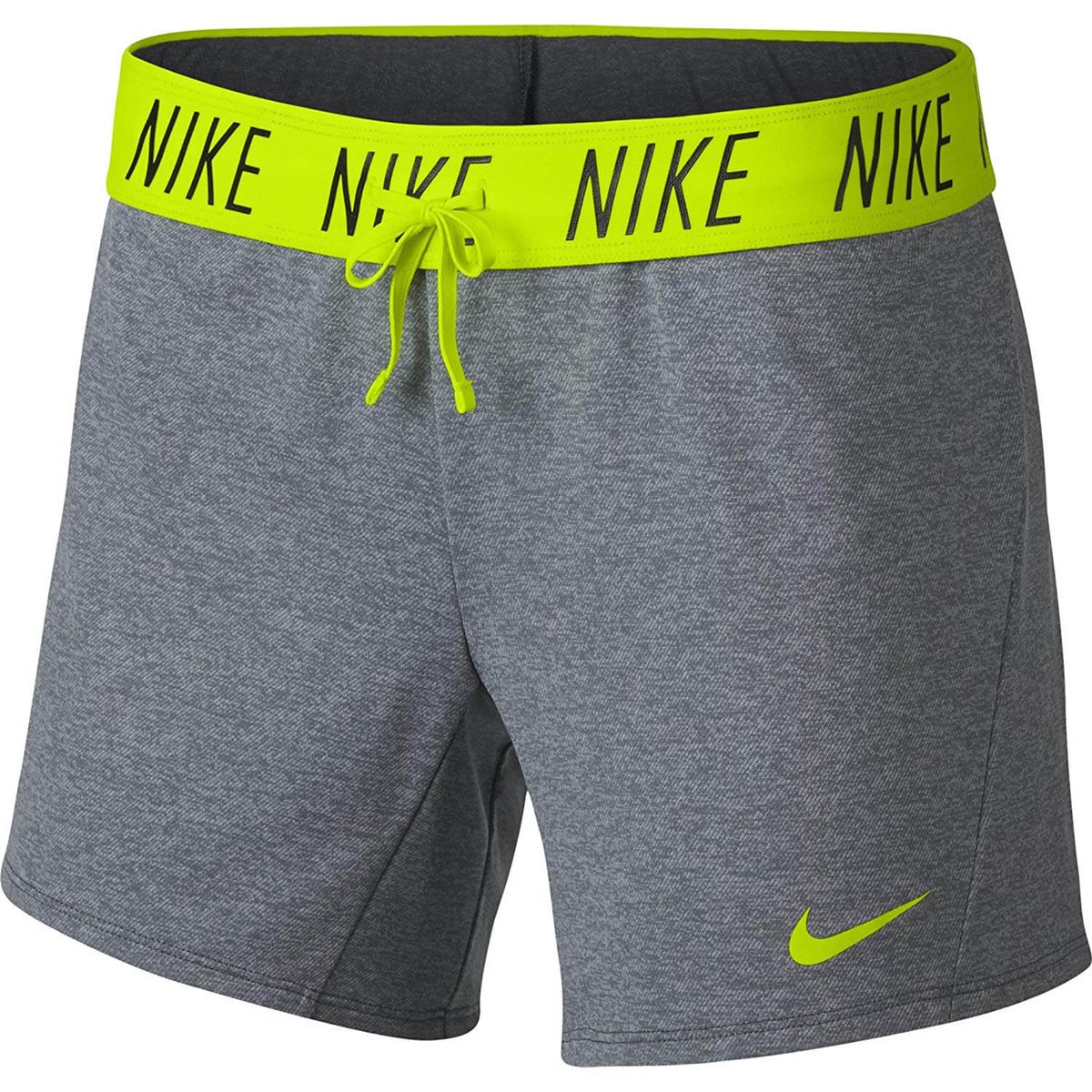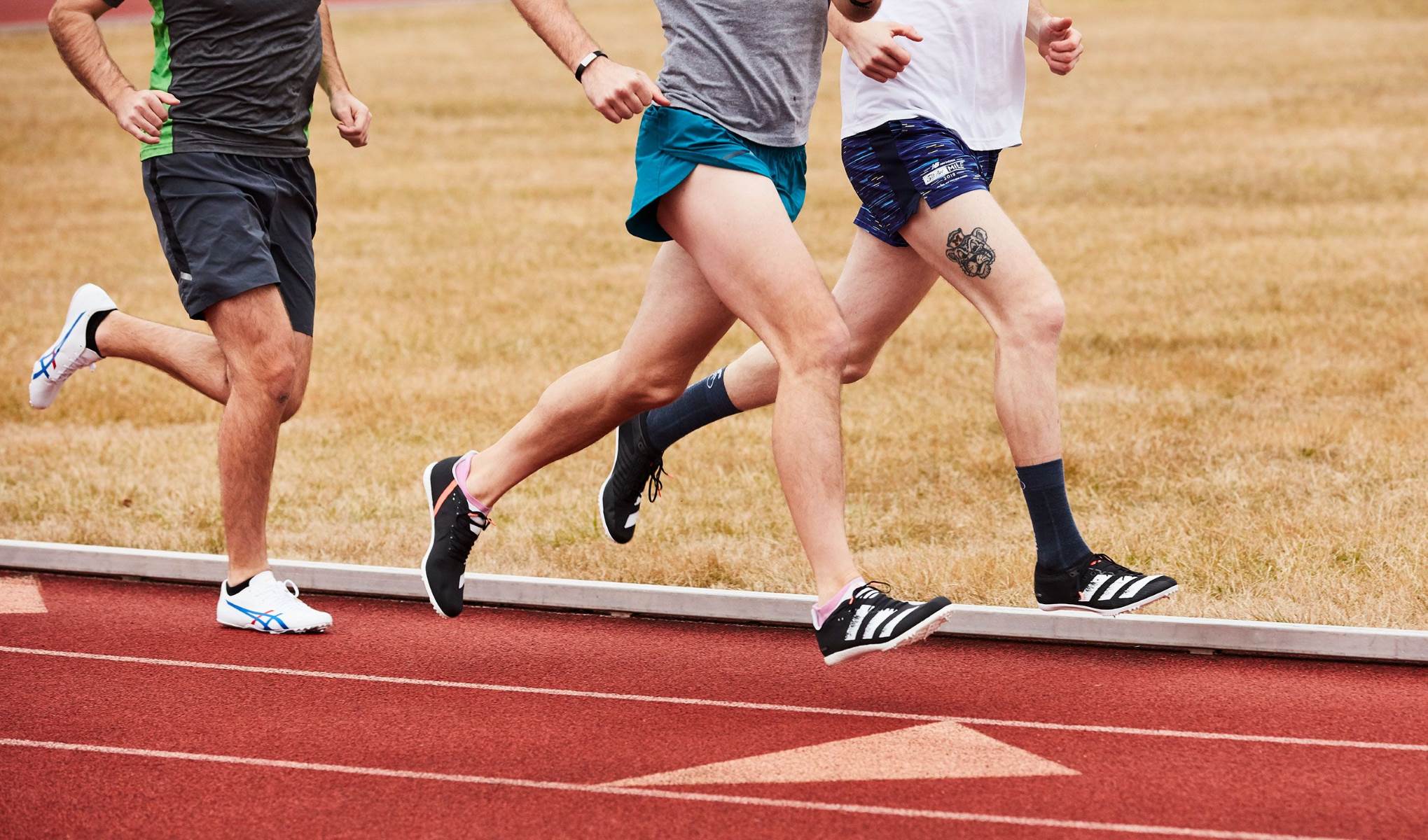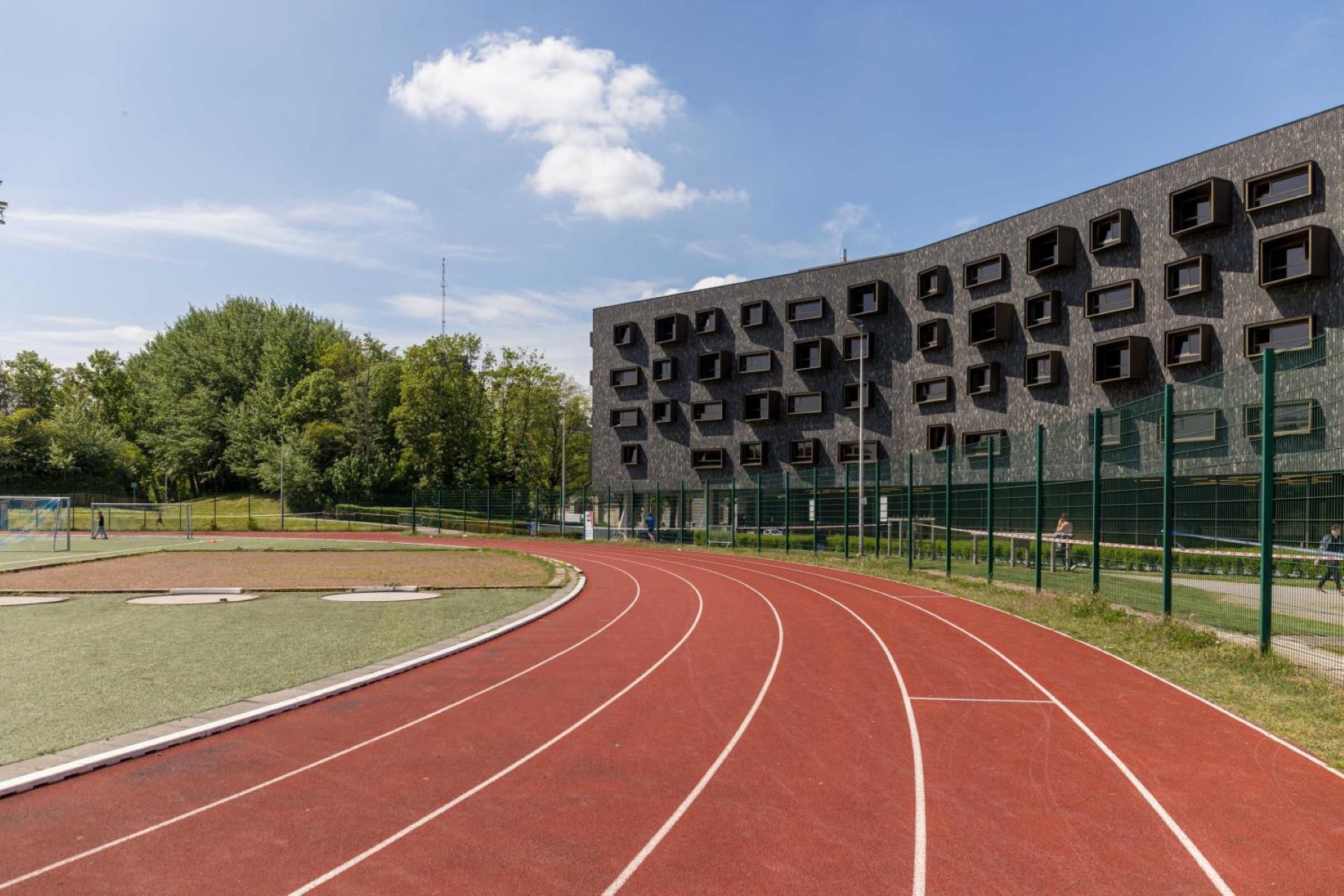

Featured
What Are Running Tracks Made Of
Published: November 12, 2023
Discover what materials are commonly used to make a track and field. Featured in this article, we explore the components that contribute to its durability and performance.
Introduction
Track and field is a popular sport that combines various athletic events, including running, jumping, and throwing. Whether it’s sprints, long-distance races, high jumps, or shot puts, track and field competitions require a well-designed and carefully constructed playing surface. The materials used in the construction of both the track and field play a crucial role in ensuring fair and safe competition.
A track typically consists of a circular or oval-shaped running path, while the field is an open area where athletes compete in jumping and throwing events. The composition of a track and field can vary depending on factors such as location, climate, and budget. In this article, we will explore the materials commonly used in track and field construction, along with the maintenance practices necessary to preserve their quality and performance.
Understanding the materials used in constructing a track and field is essential for athletes, coaches, and event organizers. It not only affects the performance and safety of the participants but also plays a role in determining record-breaking performances. By examining the composition of the track and field, we can gain insights into the complexities involved in organizing and maintaining these sporting venues.
Additionally, the type of surface used in track and field can impact the training and performance of athletes. Different surfaces offer varying levels of grip, cushioning, and energy return, which can influence an athlete’s speed, agility, and overall performance. Whether it’s a professional competition or a local school meet, having a well-maintained track and field is crucial for facilitating fair and enjoyable sporting events.
In the following sections, we will explore the various materials used in both track and field construction, as well as the maintenance practices necessary to uphold the integrity and performance of these sporting venues.
Track Materials
The construction of a track involves several key materials that contribute to its durability, safety, and performance. These materials are carefully chosen to handle the wear and tear of constant running, provide optimal performance for athletes, and ensure proper drainage. Let’s take a closer look at the materials commonly used in track construction:
- Asphalt: One of the most common materials used as a base for tracks is asphalt. It provides a sturdy and flat surface that can withstand heavy usage. Asphalt tracks are known for their longevity and ability to handle all types of weather conditions.
- Rubber: The top layer of the track is typically made of rubber, specifically an artificial rubber compound known as polyurethane. This rubber layer offers good grip, shock absorbency, and energy return, allowing athletes to maintain speed and reduce impact on joints during running events.
- Textured Surface: To enhance traction and prevent slipping, the rubber layer of the track is often textured. The texture can vary from fine granules to coarser patterns, providing different levels of grip based on the specific sport or event.
- Lines and Markings: To delineate specific lanes and marking points on the track, durable paint or thermoplastic materials are used. These lines and markings play a crucial role in ensuring fair competition and accurate timing.
- Drainage System: Proper drainage is vital to prevent water accumulation on the track surface. In order to facilitate efficient water flow, the track is constructed with a slope or camber that directs water away from the running area. Drainage channels or perforated pipes may also be incorporated into the track design.
The materials used in track construction are carefully selected to meet specific standards and regulations set by international sports organizations such as the International Association of Athletics Federations (IAAF). These standards ensure that the track provides a fair and consistent playing surface for all athletes.
Maintaining the track’s surface is essential to preserve its performance and longevity. Regular cleaning, removal of debris, and inspecting for any damage or irregularities are crucial maintenance practices. Additionally, resurfacing or recoating the track periodically is necessary to restore its optimal functionality and ensure athlete safety.
Now that we have explored the materials used in track construction, let’s move on to discuss the materials used in the field, where athletes compete in jumping and throwing events.
Field Materials
Unlike the track, which is primarily composed of man-made materials, the field in track and field events is typically composed of natural materials. These materials are carefully selected to provide a safe and suitable surface for jumping and throwing events. Let’s delve into the commonly used materials in field construction:
- Grass: Natural grass is often used as the surface material for field events. It provides a soft and forgiving surface for athletes to land on during jumping events, such as the long jump or high jump. Grass fields require regular maintenance, including mowing, watering, and fertilizing, to ensure optimal playing conditions.
- Cinder: Cinder, or crushed volcanic ash, has traditionally been used in field construction. Its porous and granular nature allows for good drainage, reducing the risk of water accumulation during rain. However, cinder fields can be quite hard and unforgiving on impact, potentially increasing the risk of injuries.
- Synthetic Turf: In recent years, synthetic turf has gained popularity as an alternative to natural grass. Synthetic turf fields offer consistent playing conditions, require less maintenance, and are more durable. They provide a reliable surface for both jumping and throwing events.
- Shot Put/Pole Vault/Pit Materials: Specific materials are used for the shot put, pole vault, and other field event areas. Shot put pits are typically filled with a combination of fine sand and soil, providing a soft landing surface for athletes. Pole vault pits often use foam padding or a layered combination of foam and air-filled bladders to cushion the athlete’s descent.
- Markings and Borders: Just like the track, field events require clear markings and borders to ensure fair and accurate measurements. Paint or other durable materials are used to mark the boundaries for each event, as well as the takeoff points for jumps and throws.
The selection of field materials depends on several factors, including climatic conditions, budget constraints, and the level of play. Event organizers and facility managers consider these factors to create a field that optimizes performance, safety, and maintenance requirements.
To maintain the field’s integrity and performance, regular maintenance practices are essential. This includes regular mowing and trimming of grass fields, inspecting and repairing any damaged areas, and keeping synthetic turf fields clean and free from debris. Proper grooming and preparation of the field ensure optimal playing conditions and reduce the risk of injuries.
Now that we have explored the materials used in both the track and the field, let’s move on to discuss the different types of surfaces used in track and field construction.
Artificial Track Surfaces
In addition to traditional track materials like asphalt and rubber, there are various types of artificial track surfaces that have gained popularity in recent years. These advanced materials offer enhanced performance characteristics, durability, and versatility. Let’s explore some of the commonly used artificial track surfaces in track and field:
- Polyurethane (PU) Tracks: Polyurethane tracks are made of a synthetic rubber compound that provides excellent shock absorbency, energy return, and traction. These tracks offer a consistent and fast surface for running events and are widely used in professional competitions. PU tracks are highly durable and can withstand heavy usage.
- Latex Tracks: Latex tracks are similar to polyurethane tracks but come at a lower cost. They provide good cushioning and energy return, making them suitable for recreational and school-level track and field events. Latex tracks are known for their durability and resistance to weathering.
- Spiked Tracks: Spiked tracks consist of a rubberized surface with embedded metal spikes. These tracks offer enhanced grip and traction, particularly for sprinters. The spikes dig into the surface, allowing athletes to generate more force and speed during running events. Spiked tracks are commonly used in professional athletics.
- Recycled Rubber Tracks: As sustainability becomes a key consideration, recycled rubber tracks have gained popularity. These tracks are made from recycled rubber materials, such as old tires, and offer similar performance characteristics to traditional rubber tracks. Recycled rubber tracks are not only eco-friendly but also provide excellent shock absorption and durability.
- Modular Tracks: Modular tracks consist of interlocking tiles or sections made of rubber or polyurethane. These tracks offer easy installation and customization options, allowing event organizers to create temporary or portable track surfaces. Modular tracks are commonly used in indoor facilities, school tracks, or areas where flexibility and versatility are required.
Artificial track surfaces are designed to optimize performance, minimize injuries, and provide excellent shock absorption. They offer consistent and reliable playing conditions, allowing athletes to perform at their best. These advanced materials are continually evolving to meet the demands of modern track and field events.
Maintaining artificial track surfaces involves regular cleaning, removing debris, and inspecting for any damage. Additionally, depending on the type of surface, routine maintenance such as recoating or resurfacing may be required to ensure optimal performance and longevity.
Now that we have explored artificial track surfaces, let’s move on to discuss the natural surfaces used in track and field construction.
Natural Track Surfaces
While artificial track surfaces offer advanced performance characteristics, some track and field events still take place on natural surfaces. These surfaces, typically found in cross-country or trail running events, provide a different challenge and experience for athletes. Let’s explore the natural track surfaces commonly encountered in track and field:
- Grass Tracks: Grass tracks are composed of natural grass, offering a softer surface for running events. These tracks are commonly used in non-competitive settings or as training grounds for athletes. Grass tracks provide a more natural feel and require additional effort to navigate compared to artificial surfaces.
- Dirt Tracks: Dirt tracks, also known as trail tracks, are typically found in cross-country events. These tracks consist of natural dirt or soil and often incorporate various terrains, including hills, trails, and uneven surfaces. Dirt tracks provide a challenging and diverse running experience, testing an athlete’s agility, endurance, and adaptability.
- Beach Tracks: Running on sand is a unique experience offered by beach tracks. These tracks can be found in beach or coastal areas, providing a soft and unstable surface. Beach tracks require additional effort due to the resistance of sand and offer a different level of impact on joints and muscles compared to typical running surfaces.
- Mountain Tracks: Mountain tracks take place in elevated areas, offering a combination of various natural surfaces, including grass, dirt, rocks, and uneven terrain. These tracks provide a challenging and scenic setting for trail running and mountain races. Mountain tracks require excellent endurance, balance, and adaptability due to the demanding nature of the environment.
- Track and Road Combination: In some events, a combination of natural and artificial surfaces is employed. For example, road races often include both pavement and natural terrain sections. These mixed-surface tracks provide a unique blend of challenges and require athletes to adapt their stride and technique based on the varying surfaces.
Natural track surfaces offer a different experience and set of challenges compared to artificial tracks. They demand adaptability, balance, and sometimes even navigation skills due to the varied terrains encountered. Competing on natural surfaces can add excitement and unpredictability to track and field events.
Due to the intrinsic nature of natural surfaces, the maintenance requirements are slightly different from artificial tracks. For grass tracks, regular mowing, watering, and fertilizing are necessary to maintain optimal conditions. Dirt tracks may require periodic maintenance, including clearing debris and ensuring proper trail markings. It’s important to respect and preserve these natural environments while organizing track and field events.
Now that we have explored the various materials used in both natural and artificial track surfaces, let’s turn our attention to the essential aspect of maintaining both the track and field.
Track Maintenance
Maintaining a track is essential to preserve its functionality, performance, and safety for athletes. Regular maintenance practices are necessary to ensure longevity and to provide an optimal playing surface for track and field events. Let’s discuss some key maintenance tasks involved in keeping a track in top condition:
- Cleaning: Regular cleaning is crucial to remove debris, dirt, leaves, and other materials that can accumulate on the track surface. Using equipment such as brooms and leaf blowers helps keep the track clean and prevents any potential hazards or obstructions during events.
- Inspecting and Repairing: Regular inspections are necessary to identify any damage, cracks, or irregularities on the track surface. Promptly addressing these issues is crucial to prevent further damage and ensure athlete safety. Repairing cracks and maintaining proper track surface levels is essential for providing a smooth and even playing surface.
- Resurfacing: Over time, the rubber layer of the track can wear down due to usage and exposure to weather conditions. Resurfacing the track involves applying a new layer of rubber to restore its grip and performance. This process may be necessary every few years, depending on the intensity of usage and the quality of the initial construction.
- Line and Marking Maintenance: Lines and markings on the track need to be regularly inspected and refreshed. Faded or distorted markings can cause confusion during races or lead to inaccurate measurements. Repainting or replacing the lines and markings as needed ensures fair competition and accurate results.
- Drainage Maintenance: Proper drainage is critical for the longevity and functionality of the track. Regularly inspecting and cleaning drainage channels or perforated pipes ensures that water can flow freely and prevent any water accumulation on the track surface. Adequate drainage helps prevent damage and deterioration caused by prolonged exposure to moisture.
Proactive and regular maintenance practices are crucial for ensuring the performance and longevity of a track. By adhering to a well-defined maintenance schedule and promptly addressing any issues, event organizers and facility managers can provide a safe and optimal playing surface for athletes in track and field events.
Now that we have covered track maintenance, let’s move on to discuss the maintenance practices necessary for the field, where jumping and throwing events take place.
Field Maintenance
Maintaining the field is essential to ensure its safety, performance, and longevity for athletes participating in jumping and throwing events. Regular maintenance practices help preserve the integrity of the field surface and provide optimal playing conditions. Let’s explore some key maintenance tasks involved in keeping the field in top shape:
- Grooming: Regular grooming of the field, especially grass surfaces, is essential. This includes tasks such as mowing, trimming, and edging to keep the grass at an appropriate height and maintain a clean and professional appearance. Grooming helps promote healthy grass growth and ensures an even and consistent surface for athletes.
- Inspecting and Repairing: Regular inspections are necessary to identify any damage or irregularities in the field. This may include addressing uneven surfaces, filling in holes or depressions, and repairing any damaged areas. Repairing the field promptly helps prevent further damage and minimizes the risk of injuries during events.
- Irrigation and Drainage: Proper irrigation and drainage are critical for maintaining a healthy and playable field. Regular monitoring of the irrigation system and adjusting watering schedules based on weather conditions is necessary to avoid overwatering or under-watering. Additionally, ensuring that the field has adequate drainage systems in place helps prevent water logging and facilitates efficient water flow.
- Fertilization and Weed Control: Applying appropriate fertilizers and implementing weed control measures is vital for maintaining the health and appearance of the field. Regularly fertilizing the field promotes healthy grass growth, while controlling weeds prevents them from competing with the grass and affecting the field’s aesthetics and performance.
- Marking Maintenance: Just like the lines and markings on the track, the markings on the field need to be regularly inspected and refreshed. This includes the measurement lines and boundaries for jumping and throwing events. Clear and accurate markings ensure fair competition and precise measurements.
Proactive field maintenance practices are crucial for creating a safe and enjoyable environment for athletes. By following a regular maintenance schedule, event organizers and facility managers can provide optimal playing conditions and reduce the risk of injuries during jumping and throwing events.
It’s important to note that the specific maintenance requirements of a field may vary based on factors such as the type of surface (grass or synthetic turf), climate, usage level, and budget constraints. Adapting maintenance practices to suit these factors ensures the field’s longevity and performance.
Now that we have covered the maintenance practices for both the track and field, let’s wrap up our discussion.
Conclusion
Track and field events require well-designed and carefully constructed surfaces to ensure fair competition, optimal performance, and athlete safety. The materials used in track and field construction, whether artificial or natural, play a critical role in providing the desired characteristics for different events.
For tracks, materials such as asphalt and rubber are commonly used to create a durable and high-performance surface. The choice of materials depends on factors such as budget, location, and climate. Regular maintenance, including cleaning, inspecting, and resurfacing, is necessary to keep the track in top condition.
The field, on the other hand, often incorporates natural materials like grass or dirt. These surfaces provide different challenges and experiences for athletes, and their maintenance involves tasks such as grooming, inspecting, and ensuring proper irrigation and drainage.
It’s important to note that maintaining both the track and field surfaces is crucial for preserving their integrity and functionality. Regular maintenance practices, such as cleaning, inspecting, repairing, and refreshing markings, help create safe and optimal playing conditions for athletes.
Whether it’s the materials chosen for the track or the grooming techniques used for the field, the ultimate goal is to provide athletes with a level playing field and a quality sporting experience.
Understanding the materials and maintenance practices involved in track and field construction enables event organizers, coaches, and athletes to appreciate the intricacies of these sporting venues. By upholding proper maintenance standards, we can ensure that track and field events continue to inspire athletes and spectators alike, while fostering an environment of fair competition and sportsmanship.
